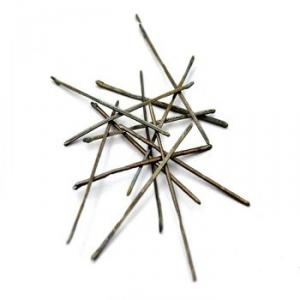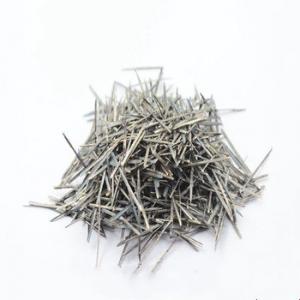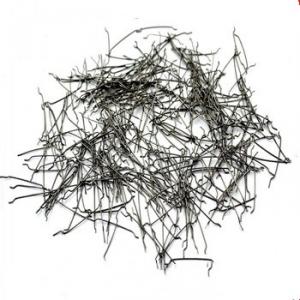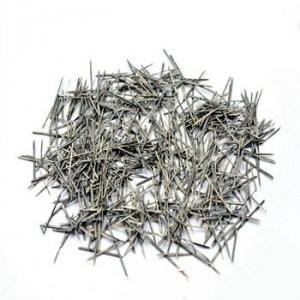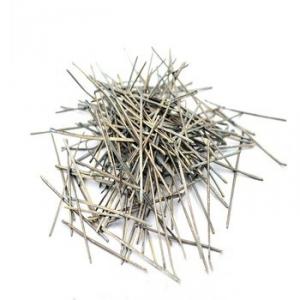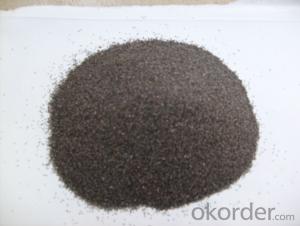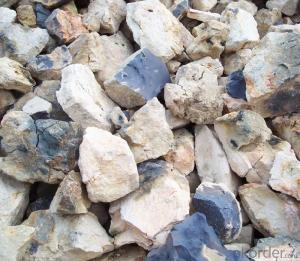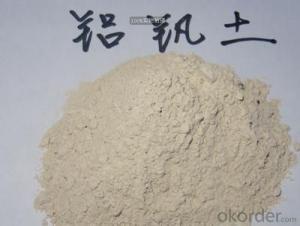SS430 High Temperature Resistant Micro Stainless Steel Wire
- Loading Port:
- China main port
- Payment Terms:
- TT or LC
- Min Order Qty:
- 20 m.t.
- Supply Capability:
- 100 m.t./month

- OKorder Service Pledge
- Quality Product
- Order Online Tracking
- Timely Delivery

- OKorder Financial Service
- Credit Rating
- Credit Services
- Credit Purchasing
Quick Details
Place of Origin: China
Model Number: 304,310,430,446
Material: Stainless Steel, Stainless Steel
Feature: High quality grade
Standard: ASTM A820
Types: Melt Extracted
Length: 25mm/35mm/19mm
Diameter: 0.3mm-0.7mm
Melting Point: Greater than 1500C
Application: Refractory Industry
Package: In cartons then put into pallets.
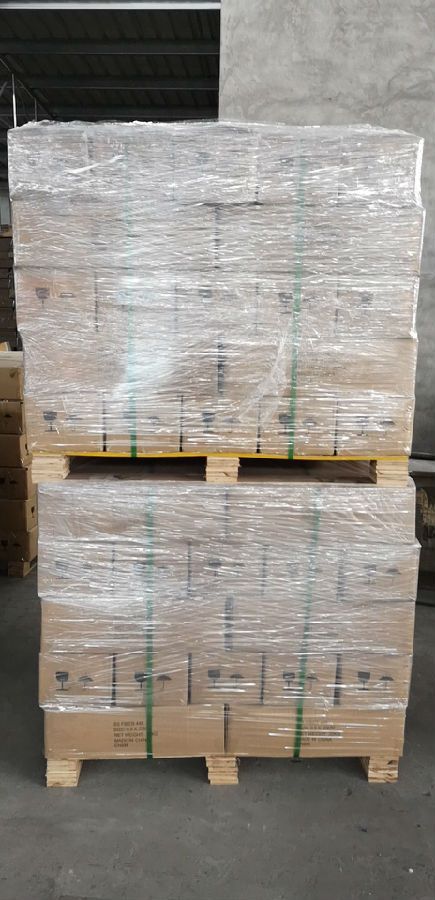
Production process:
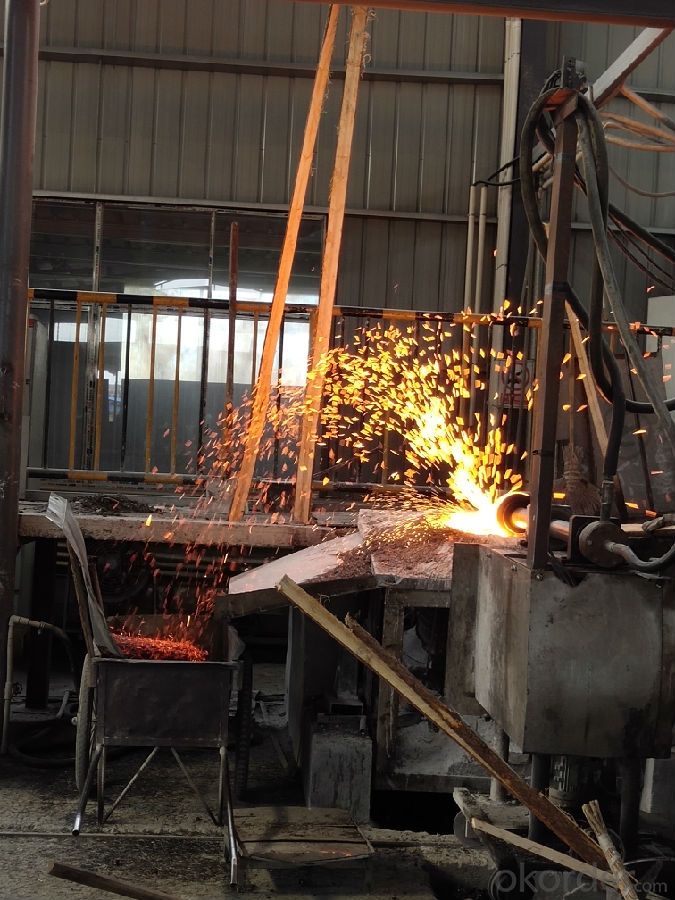
Quality assurance:
1.On a regular basis or as per your request,we entrust national testing agencies to conduct quality inspections
2. Strictly in accordance with the ISO9001-2008 international quality system standard,we monitor and manage the whole process throughout production,quality testing,and measurement to ensure product quality
FAQ:
Q: What kind of payments does your support?
A: T/T, L/C, Cash are accepted.
Q: Do you charge for the samples?
A: Accordeing to our company policy, the samples are free, we only charge the freight fee. And we will return the freight fee during the next order.
Q: Can you produce according to customers' design?
A: Sure, we are professional manufacturer.
Q: Do you have other products?
A: Yes, please check the pictures:
Test Report:
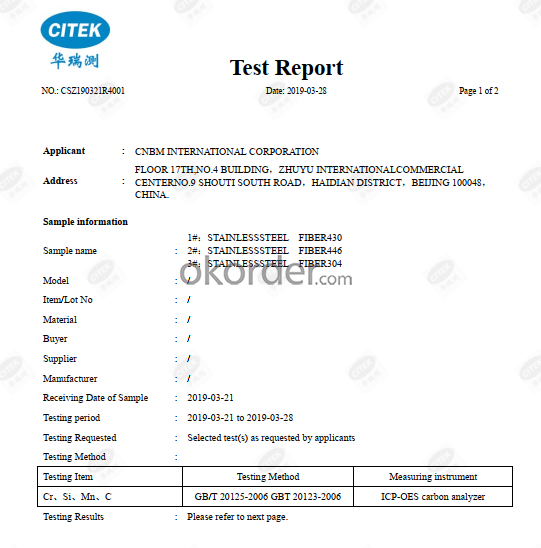
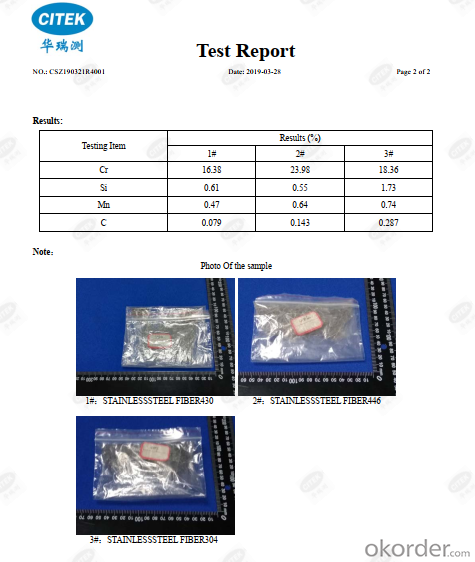
- Q:Which industry does refractory belong to? Does it belong to construction industry?
- It belongs to material, and after all, more than 60% refractories are used in metallurgical industry. If you insist on classifying it, it belongs to supporting industry of metallurgical industry. Refractory industry itself is independent.
- Q:How many types do refractory bricks have? Where the quality of refractory material is best? What is the model?
- Sinosteel Luoyang (Luoyang Refractory Material Plant in the past): High alumina(mainly blast furnace), Gongyi. There are also a series of high-tech materials (silicon carbide, carborundum, etc.) a major producer of high alumina; silicious: Resistant material for steel, glass furnace, cement kiln); magnesia. Divide from uses and divide from chemical texture; silicious(glass furnace): Xinmi, Hennan Province, Lengshui River, coke oven, etc.). As for the models, Yixing and Changxing in Jiangsu Province: Haicheng, Liaoning Province; silicious, I do not understand your intentions; magnesia (nonferrous, steel refining; magnesia: High alumina brick; Dashiqiao area! Please put it in detail.
- Q:How is the division of the fire resistant level of the rock wool board?
- The fire rating of European style rock wool board is level A , which uses Da Guang Beijing Jinyu rock wool board, with the main advantages are: 1, High acidity coefficient: The high coefficient of acidity greatly improves the life resistance and weather resistance of the rock wool board. 2, Hydrophobic air permeability: According to the picture, Jinyu Star rock wool is water-repellent, at the same time it also has breathability, so the liquid water is not easy to dip into the rock wool, and the water vapor and other gas molecules could pass through the rock wool. In particular, the insulation materials have this feature which enables the building to have "respiratory function" thus making the room more comfortable and preventing anti-mildew phenomenon happening indoor. 3, Environmental protection: The goldfish can survive freely, which just shows it is environmental; 4, High strength: The advanced pleating and curing technology make the rock wool board tensile and high compressive strength. It not only can be applied on the external wall thermal insulation and sandwich board core material, but also can be used to make structural cotton in the flexible waterproof roofing. Its quality is so stable that it is convenient in construction and durable in use. 5, Fireproofing: Not just talking about the fire rating, but the fireproofing time, which is generally up to two hours, and can be used for lining thermal insulation fire-resistant part of the glass curtain wall, through-wall pipe seal, pier?between?two?windows, window sill wall and other parts; 6, Derived advantages: Agriculture applies the soilless cultivation cotton;
- Q:What are the differences of ceramics and refractories? Is the ceramics belonging to refractories?
- They are not the same. If you say the ceramic fibers, they have some common points because the ceramic fiber is one of the refractory. It is belonged to the lightweight refractory which can be considered a new type of refractory with the main ingredient of aluminum silicate (including aluminium oxide and silicon?dioxide).
- Q:What kinds of refractory materials that uses a-Al2o3 powder? What are the purpose of it?
- 04La-Al2O3 powder is a alumina powder whose raw material is industrial aluminum oxide which has been calcined at high temperature. It is a good polishes for ceramics and jade, meanwhile, it is also an important raw material for high-end refractory materials. The technical indicators parameters A1023 mark A1535 chemical composition AL2O3≥ 99.92 3%, ≥ 3.10FE203≤ 0.799 Refractory calcined alumina powder (a-Al2O3) 1.2 true density (g & # 47, by fully ground powder made of different fineness .O.10 0.07 0.04NA2O≤ 0.93a-Al2O3 (%) ≥ 95 95 primary crystallization average grain (um) 2 ~ 3 3 ~ 5 average particle size (um) 40 ~ 602.6SIO2≤ 0.1 0.15B2O3≤ - 0, glass, engineering ceramics typical use electronic ceramic insulating ceramic refractory ceramic wear 3
- Q:Is the linear change on reheating the same as heating permanent linear change of refractory material?
- “+”represents expansion. the afterexpansion and aftercontraction after cooled to be at room temperature. The change may significantly damage the masonry of thermal kiln. There are regulations on the linear change on reheating of common refractory material in the national standard. Some physical chemical changes may continue. It is defined as the change from being heated to the specified temperature of refractory material sample. Heat preserving for a while till afte cooling to be at room temperature, then the residual will expand or contract in its length, heat preservation for a while, organization vitrification, the irreversible changes of its length refers to heating the firing refractory to be at high temperature, so as to make the volume of refractory materials expand or contract, due to the influence of uneven temperature or lack of time, otherwise it will cause the deformation of the refractory ball and make this indicator within standard even reach smaller value, so firing control must be strengthened in product production. But it is should not be too high. For refractory materials with same chemical composition, the linear change on reheating is produced in the heating process. Properly increasing sintering temperature and prolonging the holding time is an effective process measures, make its firing inadequate. When subjected to high temperature, it can reduce the thermal shock resistance. Minus sign "-" represents contraction. The permanent line rate refers to heating the fire refractory ball to the specified temperature. Linear change on reheating, also known as residual linear change, is an important indicator to assess the quality of refractory in the long time use. To control the permanent line rate within the standard or reach the minimum value.
- Q:What are some of the new refractories and what are their characteristics?
- Refractory common AZS refractories are often used brick, corundum brick, magnesia chrome brick, silicon carbide, silicon nitride bonded silicon carbide, nitrides, silicides, sulfide, boride, carbide and other non oxide refractory materials; calcium oxide, chromium oxide, aluminum oxide, beryllium oxide and other refractory materials, Magnesium Oxide
- Q:What is the difference between wear-resistant material and refractory material?
- One is to require wear-resistance. It can be both fire-resistant and wear-resistant, and they can enter different categories. Faced with different demands, it has a variety of features. But both can also be integrated. I think many materials have same division. One is fire-resistant. The two concepts are different division. They are not comparable.
- Q:what is the original materials of fireproof coating?
- Fire retardant coating is composed of the base materials (that is film forming substance), pigments, ordinary coating additives, fire retardant agent and dispersion medium. In addition to fire retardant agent, other components functions the same as in ordinary coating, but its performance and thickness are specifically required. Some solvent-based fire retardant coating can burn upon encountering fire before construction.In fact,It is the flammable solvent contained in the coating that is burning while substances such as the base materials and fire retardant agent does not burn. Because solvent-based fireproof coating contains organic solvent and these fire-resistant coating, once leaked from the bucket, are likely to cause a fire. Fireproof coating on the substrate can insulate heat only after the solvent contained evaporates compeletly.
- Q:Who knows what fire heat preservation material are there?
- It can be realized through inorganic insulation materials, such as glass wool, rock wool, foam glass etc.. The phenolic foam materials inside organic foam material is more special. Phenolic foam does not only have a good thermal insulation performance, but also can be combined with steel and other materials, to achieve a class A fire retardant level. Class A thermal insulation include: Rock (ore) cotton, foam glass, inorganic thermal insulation mortar, etc.. 1 thermal insulation materials with class A combustion performance Phenol, powder polystyrene particles etc.. Fire insulation materials of fire barrier zone can use class A material with class A combustion performance in rock (ore) cotton, foam glass, inorganic thermal insulation mortar. Hope my answer will help you.
1. Manufacturer Overview |
|
|---|---|
| Location | |
| Year Established | |
| Annual Output Value | |
| Main Markets | |
| Company Certifications | |
2. Manufacturer Certificates |
|
|---|---|
| a) Certification Name | |
| Range | |
| Reference | |
| Validity Period | |
3. Manufacturer Capability |
|
|---|---|
| a)Trade Capacity | |
| Nearest Port | |
| Export Percentage | |
| No.of Employees in Trade Department | |
| Language Spoken: | |
| b)Factory Information | |
| Factory Size: | |
| No. of Production Lines | |
| Contract Manufacturing | |
| Product Price Range | |
Send your message to us
Similar products
New products
Hot products
Related keywords
You Might Also Like

